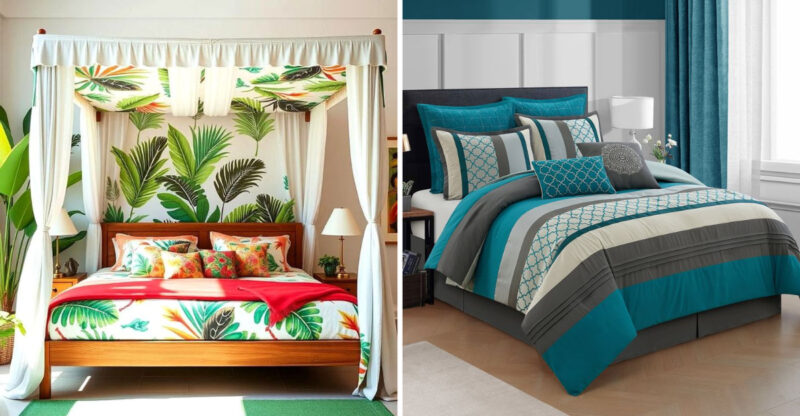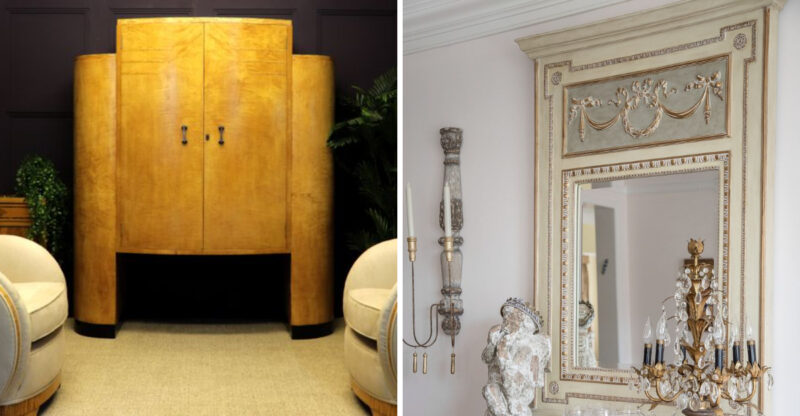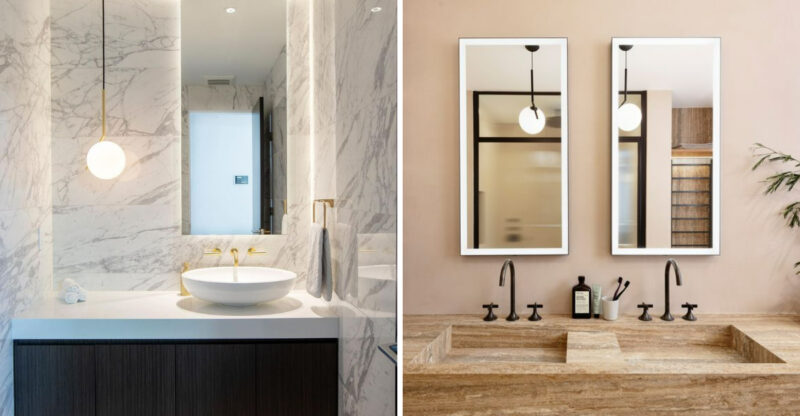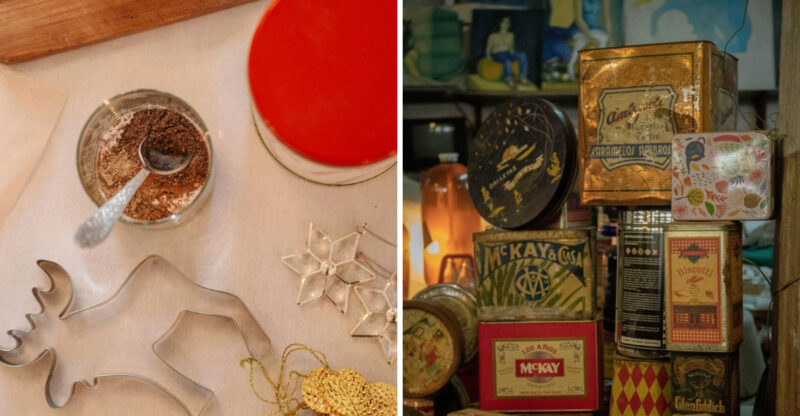10 Concrete Countertops You May Find Fascinating For Their Style
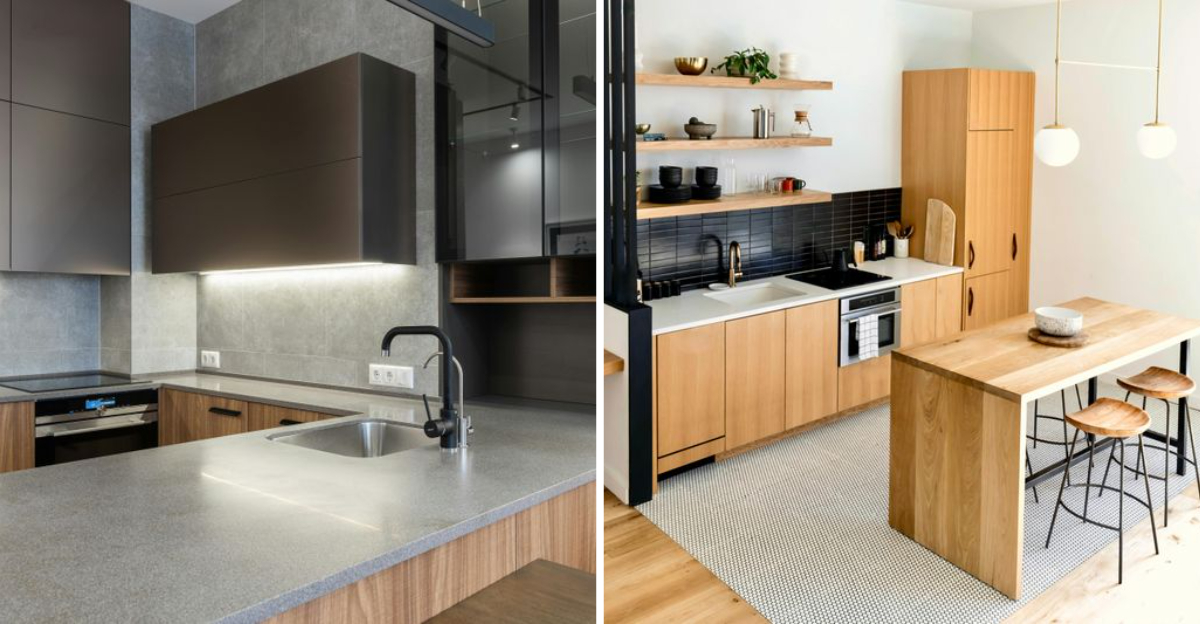
Concrete countertops have transformed from industrial materials to stunning design statements in modern homes.
They offer incredible versatility, allowing for customization in texture, color, and embellishments that other materials simply can’t match.
Whether you’re planning a kitchen renovation or just love unique interior design, these fascinating concrete countertop styles might inspire your next project. These ideas reflect general trends in design, though results may vary depending on your space, preferences, and the specific materials used.
1. Polished Concrete with Embedded Stones
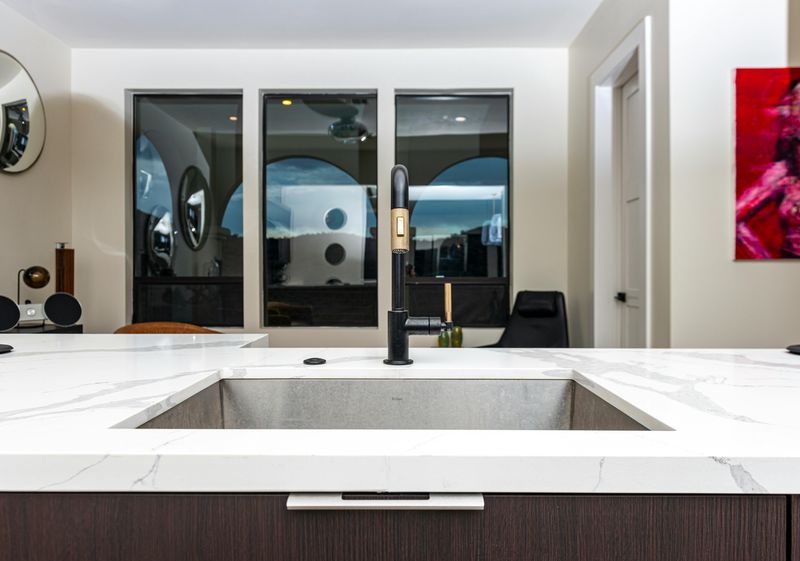
Imagine walking into your kitchen and seeing sunlight dance across embedded river stones in your countertop. This style combines smooth polished concrete with colorful pebbles that create a one-of-a-kind surface reminiscent of a streambed.
The stones are carefully placed during the pouring process, then ground down to sit flush with the concrete surface. What makes this style so appealing is how each countertop becomes completely unique no two will ever be identical.
For a more dramatic look, larger stones can be used, while smaller pebbles create a more subtle, refined appearance. The contrast between the matte concrete and the polished stones adds depth and character to any kitchen or bathroom.
2. Textured Concrete with Geometric Patterns
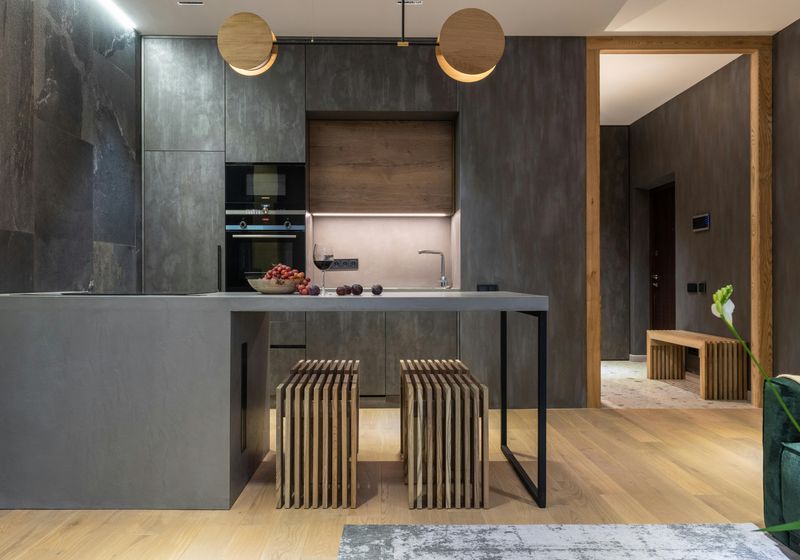
Bold geometric patterns pressed into concrete create a tactile and visual feast. These countertops feature precise impressions from hexagons to herringbone designs that transform ordinary concrete into mathematical art.
The process involves custom-made molds pressed into wet concrete before it sets. When light hits these surfaces, the shadows created by the indentations add dimension and movement that flat countertops simply can’t achieve.
Many homeowners choose to enhance these patterns with subtle staining or even metallic pigments that highlight the geometry. This style works particularly well in contemporary spaces where the countertop becomes a functional conversation piece rather than just a work surface.
3. Colored Concrete in Earthy Tones
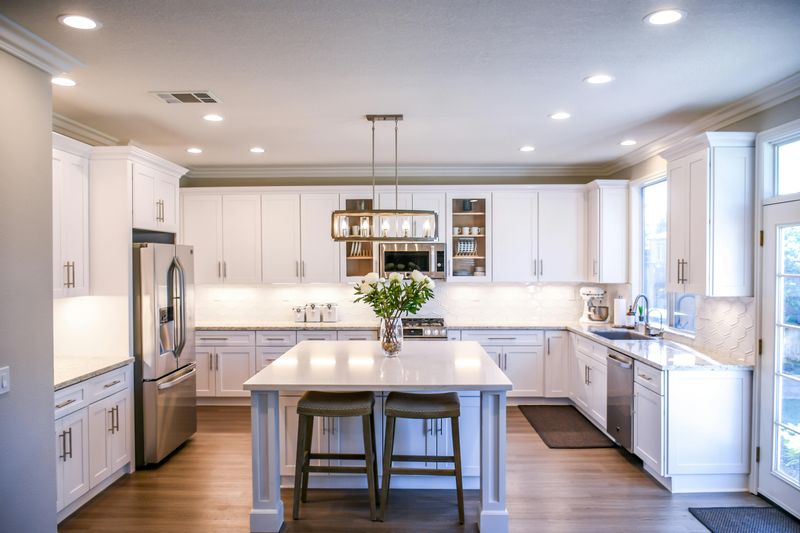
Warm terra cotta, soft sage green, and muted clay tones bring concrete countertops to life with earthy character. Unlike painted surfaces, these colors are mixed directly into the concrete, creating depth that changes subtly as light moves across the room.
The beauty of these countertops lies in their subtle color variations just like natural stone, no two sections look exactly alike. Pigments can be adjusted to complement existing design elements in your home, from cabinet colors to flooring tones.
These earthy concrete countertops work wonderfully in kitchens with natural elements like wooden cabinets or stone floors. The matte finish typical of colored concrete also provides a refreshing alternative to the high-gloss surfaces that dominate many modern kitchens.
4. White Concrete with Marble Veining
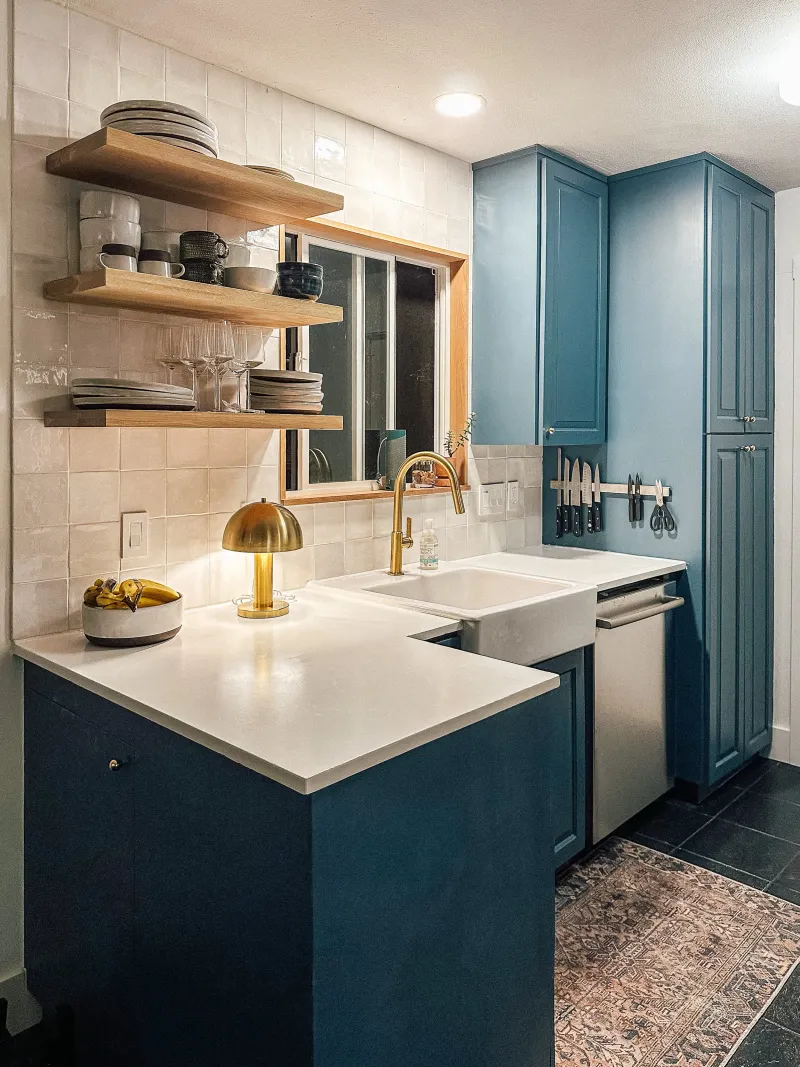
White concrete countertops with delicate gray veining offer the elegant look of marble without the hefty price tag or maintenance concerns. This clever technique mimics natural stone through the careful addition of pigments during the concrete mixing process.
The veining can be as subtle or dramatic as you desire, creating a completely customized look. Unlike real marble which can etch and stain easily, these concrete versions provide better durability while maintaining that coveted luxurious appearance.
Many designers now prefer this option for clients who love the marble aesthetic but need something more practical for busy kitchens. The slightly industrial quality of concrete also adds an interesting juxtaposition to the traditionally upscale marble look, creating spaces that feel both elegant and contemporary.
5. Matte Black Concrete
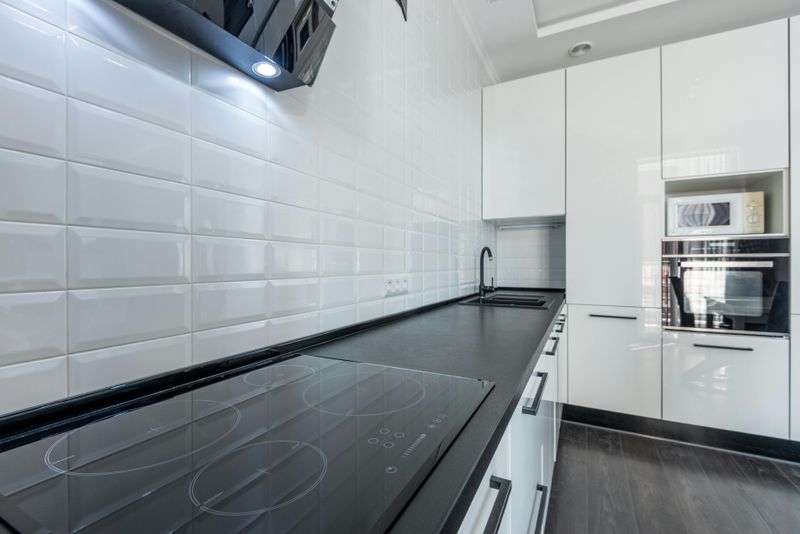
Dramatic and bold, matte black concrete countertops create instant visual impact in any kitchen. The deep charcoal pigments are mixed throughout the concrete, creating a rich, consistent color that serves as a striking backdrop for colorful foods and kitchen accessories.
The non-reflective surface hides fingerprints and water spots better than glossy finishes, making it practical for everyday use. When paired with brass or copper fixtures, these countertops take on an almost luxurious quality despite their industrial roots.
For those worried about dark countertops making spaces feel smaller, fear not when balanced with lighter cabinets or walls, black concrete actually creates a grounding element that can make a kitchen feel more intentional and designed. The texture of concrete adds subtle dimension that flat black surfaces often lack.
6. Concrete with Metal Accents
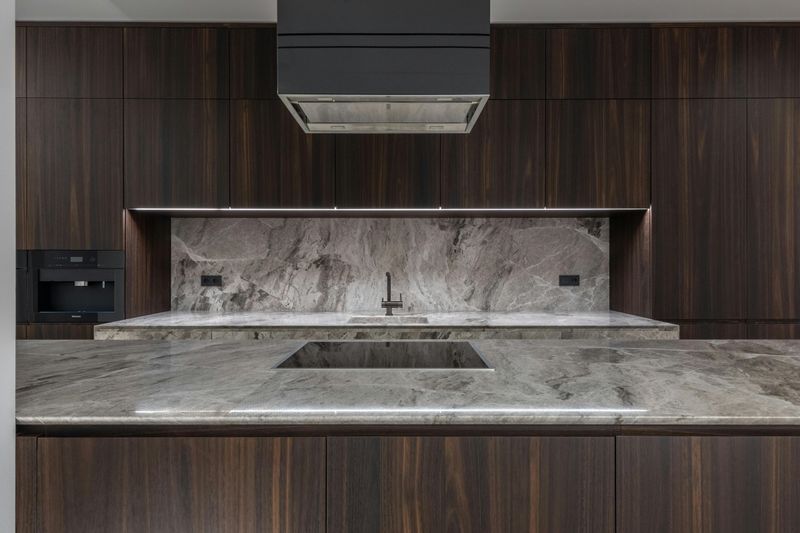
Strips of copper, brass, or stainless steel embedded within concrete create stunning linear details that catch the eye. These metal inlays can form geometric patterns, mimic seams, or simply provide unexpected glints of reflection across an otherwise matte surface.
The process involves carefully placing metal strips during the concrete pour, then polishing the surface to reveal the contrast. Homeowners particularly love how these countertops age while the concrete remains relatively unchanged, metals like copper and brass develop rich patinas over time that tell the story of your kitchen’s use.
This style bridges industrial and luxury aesthetics, working equally well in loft-style spaces or more traditional kitchens looking for a contemporary edge. The metal elements can be coordinated with fixtures and hardware to create a cohesive design language throughout the space.
7. Exposed Aggregate Concrete
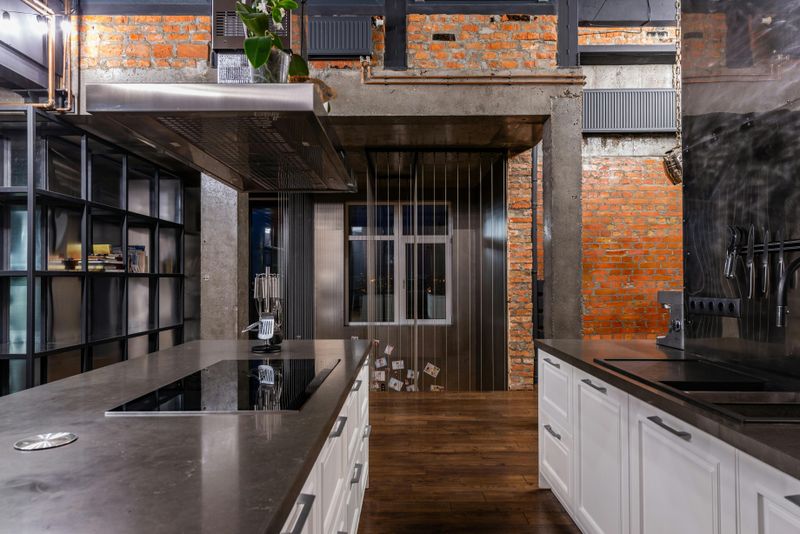
Raw and textural, exposed aggregate countertops reveal the beautiful mix of stones and materials within concrete. After pouring, the top layer of cement paste is removed through washing or grinding, exposing the varied colors and shapes of the aggregate materials underneath.
This technique creates a naturally speckled appearance similar to terrazzo but with a more rustic, organic quality. The exposed materials can be customized from local river rock to recycled glass chunks allowing for personalization that connects to your specific location or design preferences.
Though more textured than typical countertops, a good sealer makes these surfaces perfectly functional while maintaining their distinctive appearance. Many homeowners appreciate how these countertops tell the visual story of concrete’s composition rather than trying to mimic other materials.
8. Concrete with Wood Inlays
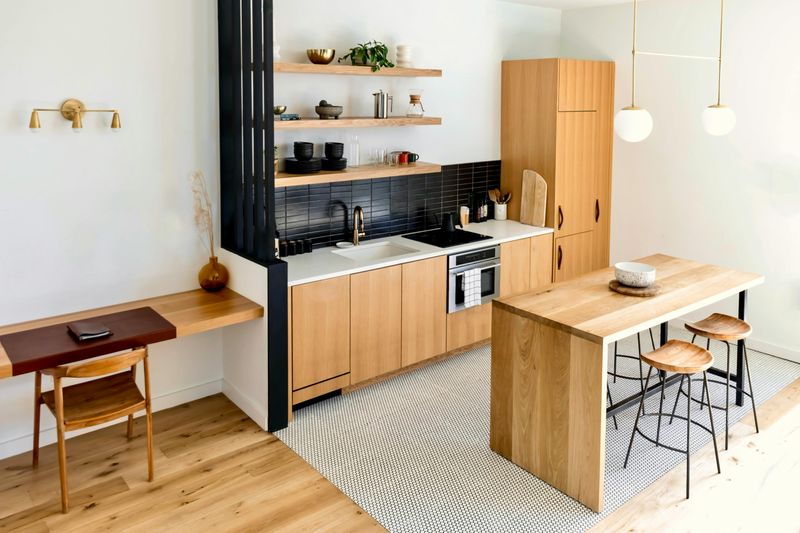
The marriage of concrete and wood creates countertops with unexpected warmth and character. Strips of hardwood often walnut, oak, or maple are embedded within the concrete pour, creating striking linear elements that soften the industrial nature of concrete.
These mixed-material countertops offer practical benefits too. The wood sections can serve as built-in cutting boards or trivets for hot pots, adding functionality along with beauty. Over time, both materials develop unique patinas that reflect their use, telling the story of your kitchen’s history.
When designed thoughtfully, the wood elements can visually connect to other wooden features in your kitchen, like flooring or open shelving. This creates a cohesive design that feels intentional rather than trendy, making these countertops a timeless choice for homes that balance contemporary and natural aesthetics.
9. Minimalist Polished Concrete

Clean lines and a perfectly smooth surface define minimalist polished concrete countertops. Free from embellishments, these countertops rely on exceptional craftsmanship to achieve flawless surfaces that reflect light subtly without appearing glossy or artificial.
The beauty here lies in simplicity slight color variations and the occasional tiny air bubble remind you this is a handcrafted material with character. Many designers choose these countertops for modern spaces where they want materials to speak through their inherent qualities rather than added decorative elements.
Though they appear deceptively simple, achieving this level of refinement requires multiple grinding and polishing steps with increasingly fine abrasives. The result is a countertop that feels silky to the touch while maintaining the substantial, grounded quality that makes concrete so appealing in contemporary interiors.
10. Concrete with Integrated Sink
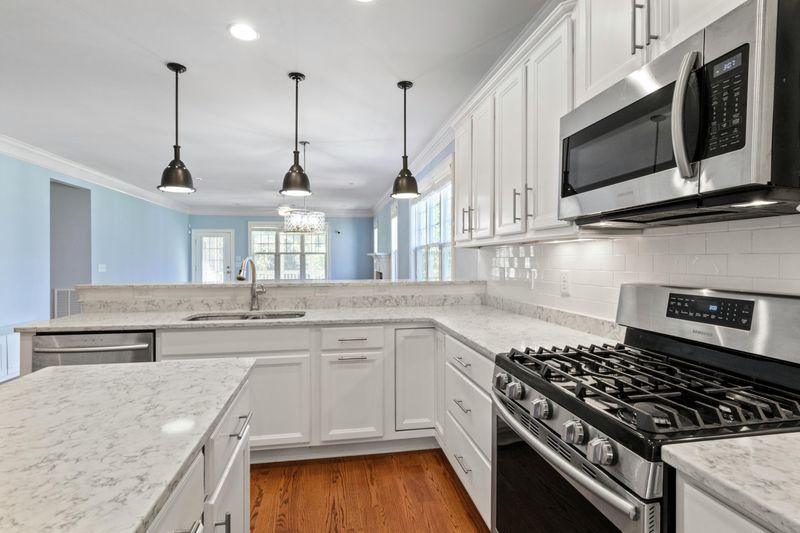
Flowing seamlessly from countertop to sink, these one-piece concrete creations eliminate the usual dividing lines of traditional kitchens. The sink is formed as part of the countertop mold, creating a continuous surface that’s both visually striking and practical.
Without seams to trap dirt or moisture, cleaning becomes remarkably simple. The design possibilities extend far beyond standard sink shapes gentle slopes, asymmetrical basins, or even double sinks with varying depths can all be custom created to match your specific needs and aesthetic preferences.
Homeowners particularly appreciate how these integrated designs can incorporate drainboards that channel water directly into the sink or specialized zones for food prep. The monolithic appearance creates a sculptural quality that elevates the entire kitchen, turning functional elements into architectural features.


